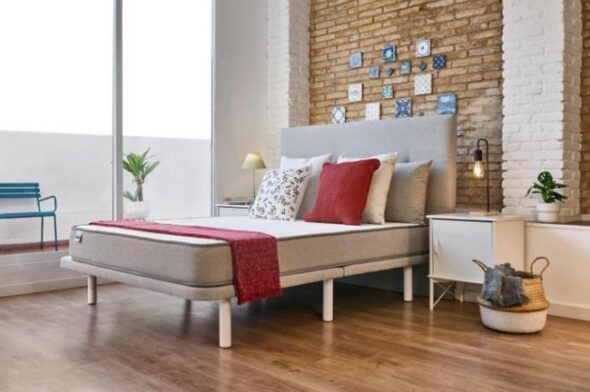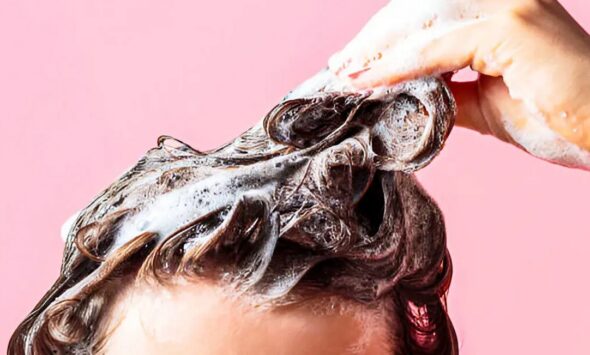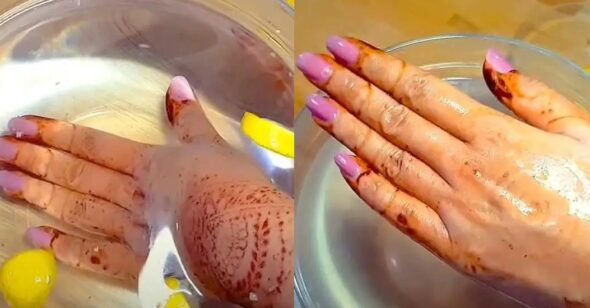Clean and healthy skin is the dream of every person, at any age. It is often quite difficult to achieve such a result because you need to make a lot of effort: give up bad habits, revise your diet, and monitor your drinking regime.
The appearance of acne on the body and face not only spoils the appearance but also creates prerequisites for social discomfort and affects mood and self-esteem. Inflammatory processes change the texture of the skin and leave unattractive scars.
Let’s take a closer look at the causes of problems with the epidermis and analyze the methods of combating acne, inflammation, and acne breakouts.
What is acne vulgaris?
Acne is a disease of the skin that is accompanied by the clogging of pores and subsequent inflammation. Pimples appear not only during puberty when a hormonal surge occurs in the body, but also in adulthood.
Since the appearance of acne is associated with the activity of the sebaceous glands, pimples most often appear in the areas where their clusters are located.
- on the face
- in the upper part of the chest
- on the back
ក្នុងពេលដំណាលគ្នា, in teenagers, pimples “pop out” the most in the T-zone (forehead, nose, upper part of the chin, nasolabial triangle). In adults, in the U-zone (cheeks, the area around the mouth, the lower part of the chin),.
Depending on the clinical picture, acne can appear as non-inflammatory elements (comedones) or inflammatory (pimples).
The mechanism of acne formation is as follows:
- An excessive amount of sebum accumulates at the mouths of hair channels, which creates favorable conditions for the formation of a sebaceous plug. ក្នុងពេលដំណាលគ្នា, the pH of sebum changes; it loses its bactericidal properties.
- Follicular hyperkeratosis. A thickening of the stratum corneum occurs due to a disturbance in the renewal process of hair follicle cells. Dense sebaceous plugs and layering of keratinized cells—all this prevents the normal outflow of sebaceous gland secretions.
- The balance of the skin microbiome disturbed. The uncontrolled growth of pathogenic microorganisms begins. In particular, there is an increase in the number of bacteria that cause acne (Propionibacterium acnes). These microorganisms are normally present on the skin of healthy people, but under certain conditions, they can cause acute inflammatory reactions. Rashes, inflammation, and other imperfections appear.
- This is the appropriate reaction of tissues to the active reproduction of acne propionibacteria.
Acne is the most common skin disease. According to statistics, about 650 million people worldwide have acne. In 20% of them, the disease occurs in a moderate and severe form, due to which serious cosmetic defects are formed:
- Post-inflammatory scars;
- Cysts;
- Nodules
Dermatologists distinguish 4 stages of acne:
Lung
In this case, comedones are formed on the skin without signs of inflammation. Sebaceous plugs are black and white dots that do not protrude above the surface of the skin, there are no inflammatory processes.
moderate
With this form of acne, black spots and a small amount of papulo-pustular elements are present on the skin. Inflammatory processes are weakly expressed.
Heavy
If severe acne occurs, a polymorphic rash in the form of comedones, pustules, and papular elements is present on the skin. Inflammatory processes are pronounced, they protrude above the surface of the skin.
Extremely difficult
This form of acne is called “nodular”. Cystic-nodular and scar changes caused by post-inflammatory sclerotic processes are present on the skin. The rash is represented by a significant number of different elements with cicatricial changes, scars, and nodes with a diameter of about 5 mm or more.
Causes of acne on the skin
There are many causes for acne breakouts. ក្នុងពេលដំណាលគ្នា, a key role is played by genetic predisposition, which has been confirmed by several studies. The mechanism of inheritance is polygenic, which causes a variety of symptoms and their degree of manifestation in different people. According to experts, genetic factors are responsible for more than half of the cases of the disease.
In addition to genetic features, the formation of acne is facilitated by the influence of various external (exogenous) and internal (endogenous) factors.
Exogenous causes of acne
External factors provoking the appearance of acne include the following:
Decorative cosmetics
In cases of improper use of decorative cosmetics that contain fat, the pores become clogged, which worsens the condition of the skin. However, beauty products without oils do not cause such problems.
Climatic conditions
Excess heat and high humidity stimulate the activity of the sebaceous glands. As a result, a lot of sebum is formed, and inflammation and acne appear.
Ultraviolet
The sun’s rays, which carry ultraviolet, hurt the health of the skin. Ultraviolet radiation damages keratinocytes, due to which metabolic processes in skin cells are disturbed.
Chemically aggressive and harmful substances
Working with chemical and potentially dangerous substances can lead to the appearance of acne due to the development of hyperkeratosis of the skin and hair follicles.
Squeezing out pimples
Trying to get rid of pimples by squeezing them is fundamentally wrong. Mechanical impact on the skin in conditions of insufficient sterility often leads to the opposite effect: inflammation spreads to larger areas as the infection spreads.
Medicinal acne
There is a separate category of drugs that can cause exacerbations of acne or provoke their appearance. Before taking any drugs, it is necessary to consult a dermatologist about such side reactions.
Excessive neatness
The habit of washing “to a creak” and the abuse of alcohol wipes and antiseptics provoke disturbances in the composition of the skin microbiome. As a result, the imbalance of microflora manifests itself in the form of acne.
Endogenous causes of acne
The causes of acne can be internal:
Hormonal failures
Male sex hormones, such as testosterone and its active metabolites with androgenic activity, can stimulate the secretion of sebum and increase the activity of the sebaceous glands. This is typical for the period of puberty. ក្នុងពេលដំណាលគ្នា, it is worth noting that androgens are produced in representatives of both sexes.
It is about periodic changes in the hormonal background. This happens during the menstrual cycle, during pregnancy, and lactation. The changes provoke increased production of sebum, which can cause acne.
Endocrine disorders
Acne and blackheads are often present in patients with diseases of the endocrine system. Such pathologies provoke changes in the work of the endocrine glands, which increases the risk of acne and other skin problems.
Violations in the process of cellular exchange
Normally, the life cycle of a cell is 21–28 days. Hyperkeratosis develops in cases of disturbances in the regulation of skin cell division. This is a pathological condition in which cell division is accelerated and problems with exfoliation are observed.
Hyperkeratosis is caused by innate features of the immune system and is the immune response to the colonization of the hair follicle by microorganisms (Propionibacterium acnes). Also, sebum with impaired physical and chemical properties helps to increase the permeability of the skin and stimulates the inflammatory processes of the epidermis.
Diseases of the gastrointestinal tract
There are several studies that have revealed a direct relationship between disorders of the digestive system and inflammatory processes on the skin. A key role is assigned to the condition of the intestinal microflora. If the balance of the intestinal microbiome is disturbed, there is a lack of lactobacilli, and various pathological processes occur: fermentation and metabolic disorders. As a result, the skin begins to perform part of the excretory functions to neutralize the accumulated toxins: pimples appear.
Individual features of skin microflora
Entire colonies of microorganisms live on the skin of each person. Among them is Propionibacterium acnes. It is an anaerobic, gram-positive bacterium that produces propionic acid. It lives in pores and hair follicles, using sebum as food. These microbes change the physical and chemical properties of sebum, which, as a result, irritates the skin, lowers immunity, and increases the permeability of the epidermis.
How acne is related to human nutrition?
There is no evidence to support the effectiveness of the diet in the treatment of acne. ក្នុងពេលដំណាលគ្នា, an interesting fact: residents of regions isolated from civilization, such as Polynesia, practically do not face acne problems.
Stress
Stress can provoke an exacerbation of acne. This is due to the close relationship between the condition of the skin and the nervous and endocrine systems. Prolonged stay in a state of chronic depression leads to the formation of acne. This is because excessive mental stress activates the synthesis of the propionibacterium neuropeptide, which acts as a pro-inflammatory agent, increasing inflammatory processes in the skin.
In addition, the release of corticotropic hormones and catecholamines into the blood during the periods of stress stimulates the increased secretion of sebum, which provokes the appearance of comedones. The intensity of acne directly depends on the level of stress on the nervous system.
Immunity disorders
The appropriate reaction of the skin to the increased secretion of sebum can manifest itself in different ways. Some people do not develop large clusters of inflammation, while others develop not only comedones but also pimples. Such a reaction is individual and depends on the state of immunity.
Severe forms of acne are more often observed in people with congenital abnormalities of the immune system or acquired pathologies accompanied by disorders of the immune status.
Acne and chocolate
In the presence of skin problems, you can often hear advice to limit the use of chocolate. But with this recommendation, not everything is clear: you need to take into account the type of chocolate, its quality, its sugar content, និង, of course, the amount of consumption.
One of the causes of skin problems in people with a sweet tooth is an excess of fats and carbohydrates in their diet. These components stimulate the activity of skin glands, which can cause clogging of pores and inflammation.
Another cause of acne is an excess of insulin, which is produced in the body in response to excessive consumption of chocolate. The accelerated synthesis of insulin can provoke the body’s attempts to dispose of the excess of this hormone, which, in turn, can affect the excessive production of sebum.
Chocolate often falls out of favor with nutritionists because of its ability to cause allergic reactions. In response to the use of these sweets, disorders in the work of the digestive system and, as a result, skin problems can be observed.
However, you should not “put a cross” on chocolate. Moderate consumption of these delicacies not only lifts the mood but also protects the body from an excess of free radicals. Also, in defense of chocolate, it can be said that it improves brain function, which was confirmed by Italian scientists in their research.
Acne on the skin and milk
Hormones contained in milk can increase the level of testosterone in the body. This, in turn, leads to an increase in the production of sebum and clogging of follicles. In addition, milk contains whey protein and casein, which can increase the level of insulin-like growth factor-1 (IGF-1), which also provokes the appearance of acne.
Natural yogurt or cheese does not have such an effect on the condition of the skin. Due to the fermentation process, yogurt contains less insulin-like growth factor, which softens its effect on the skin.
If we talk about pasteurized or ultra-pasteurized milk, it is worth noting that during such treatment, both harmful and beneficial microorganisms contained in milk are destroyed. There is no harm or benefit from it.
If you decide to switch to soy, almond, rice, coconut or oat milk, you should consider not only the composition of such products but also possible allergic reactions. It happens that the cause of acne is the increased content of histamine in the blood. Molecules of this substance stimulate the secretion of various hormones by the pituitary gland. Some of these hormones, in turn, can contribute to the formation of acne and pimples.
How to treat black spots, pimples, and acne on the skin of the face and body
Despite the significant achievements of scientists in understanding the causes and mechanisms of the appearance of acne, treating acne remains a difficult task. It should be taken into account that such a disease is often caused by genetic predisposition, features of the composition of sebum, as well as the influence of the endocrine and nervous systems.
Acne is a chronic dermatosis. ដូច្នេះ, effective treatment takes time. Even after a successful medication course, long-term supportive care is needed to consolidate the result and prevent relapses.
To choose an effective treatment, it is necessary to clearly understand the causes of dermatological problems and remove the factors that provoke them.
Among the effective methods, the following can be distinguished:
Exfoliation
Systematic care, which includes procedures for removing horny layers with deep cleansing, contributes to a significant improvement in the appearance of the skin. Depending on the type of epidermis and its condition, you can choose:
- scrub;
- peeling;
- hommage;
- masks
The frequency of such care measures depends on the type and individual needs of the skin.
Bactericidal agents
Special pharmacy cosmetics and cosmeceuticals have an antimicrobial effect on the epidermis, slowing down the development of propionobacteria responsible for the appearance of new imperfections. You can choose products with a drying effect that will reduce the production of sebum and the severity of rashes.
Antibiotics
In severe cases, dermatologists recommend the systemic use of antibiotics. The following drugs are usually prescribed: minocycline, doxycycline, tetracycline, and erythromycin.
Hormonal treatment
If acne is caused by a hormonal imbalance, the doctor may prescribe hormonal drugs to restore the balance. Such treatment is carried out after a thorough diagnosis and tests.
Retinoids
A good effect is achieved when using derivatives of vitamin A. Retinoids have a positive effect on the normalization of cellular metabolism, prevent the formation of acne and post-acne, and lighten areas of the skin that have darkened after the healing of acne.
Phototherapy
This is a hardware technique that is used in the conditions of a cosmetology office. The treatment is based on intense light exposure to acne. After treatment, there is a decrease in the production of sebum, and the blood supply in the sebaceous glands improves.
Good results can be achieved with the help of other cosmetology procedures:
- laser treatment
- personal
- photothermolysis
- injection therapy, etc.
These methods effectively relieve inflammatory processes, improve cell nutrition, and prevent the formation of scars after treating acne. In parallel with these procedures, treatment of chronic diseases that cause acne on the face and body can be carried out.
Post acne – skin care after treatment of acne on the skin
Post-acne is a skin change that remains after acne treatment. They appear in the form of uneven texture of the skin, scars, and scars. The consequences can be different: pronounced or not very noticeable.
Types of postage:
- Dark spots on the skin with a reddish or bluish tint. Such traces remain after squeezing pimples and blackheads. ក្នុងពេលដំណាលគ្នា, vascular stars may appear with such spots.
- Pigmentation. This is a darkening with a brown tint. In this case, whitening agents are needed to help lighten pigmented areas.
- Scars These are aesthetic defects characterized by indentations on the skin. They look like craters, take a long time to heal, and create psychological discomfort. In such cases, therapy aimed at the production of collagen fibers is needed to restore the upper layer of the epidermis.
Without the necessary treatment, such dermatological skin defects can persist on the face and body for a long time. Modern cosmetology offers various methods that can be used to eliminate unwanted scars.
The following hardware methods give a good result:
- Photothermolysis is a delicate effect on the skin by a laser beam with the use of heat treatment. As a result, old cells are destroyed and new cells are stimulated.
- Laser grinding of scars is performed using special equipment. As a result of exposure, damaged areas and wounds are cauterized, after which peeling of the skin occurs in the treated areas.
- Dermabrasion is a mechanical grinding of the skin to remove the upper layer of the epidermis. This process contributes to the leveling of the relief and the elimination of aesthetic defects caused by post-acne.
No less effective are the special injections that can be performed in clinics for aesthetic medicine. These procedures include injections with fille mesotherapy, adapt, and plasma lifting. The procedure of middle and surface chemical peeling gives good results.
Do not self-medicate if your dermis is prone to acne. Contact dermatologists and cosmetologists to choose an effective and safe treatment for the beauty and health of the skin.


